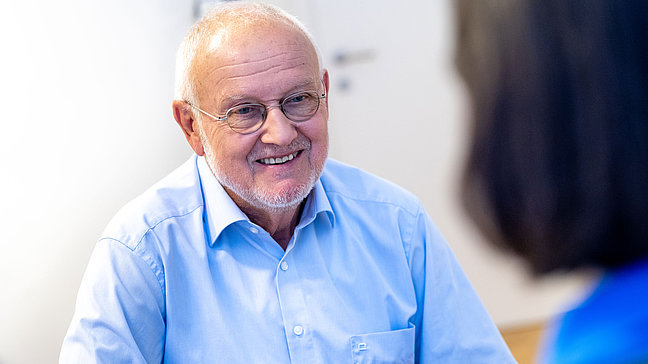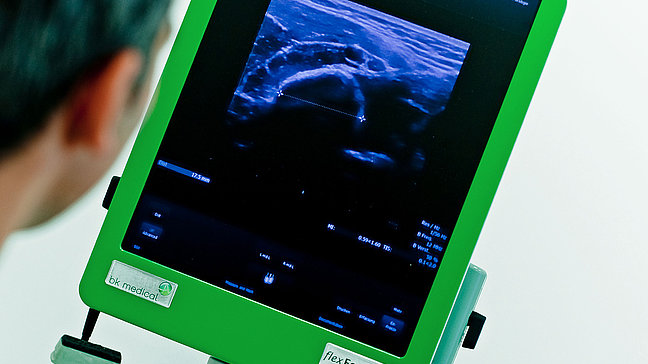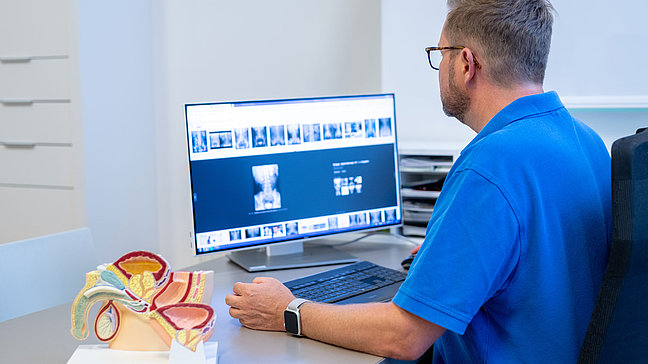
Varicose veins in the testicles (varicocele)
Causes of varicose veins in the testicles
A varicocele can be either primary (idiopathic) or secondary (symptomatic). The primary form is usually genetic and results from a weakness of the venous valves or an unfavorable orifice of the left testicular vein into the left renal vein, which obstructs the blood flow and leads to a backflow. Secondary varicoceles are caused by an obstruction in the outflow of blood, such as a tumor, which impairs the return flow of blood.
Symptoms of varicose veins in the testicles
- Pain or heaviness in the scrotum
- Swelling or visible enlarged veins in the scrotum
- Changes in the size or shape of the scrotum
- Possible impairment of sperm quality
Diagnosis of varicose veins in the testicles
Diagnosis is made by a physical examination and an ultrasound scan (Doppler sonography) to check the extent and blood flow in the affected veins. A sperm analysis may also be necessary to assess the effects on fertility.
Treatment options for varicose veins in the testicles
- Conservative therapy: In mild cases, supportive measures such as wearing tight underpants can provide relief.
- Sclerotherapy: Injection of a sclerosing agent to close the affected veins.
- Surgical procedures: A varicocelectomy, in which the affected veins are surgically tied off and severed.
- Severity of the procedure: Moderate, usually requires a short recovery time.
- Duration of the procedure: Approximately 1 to 2 hours.
- Aftercare: Cooling of the scrotum and pain medication, rest period of about one week.
- Probability of success: High, with a significant improvement in symptoms and sperm quality.
Preventive measures for varicose veins in the testicles
There are no specific measures to prevent varicoceles. However, a healthy lifestyle and regular urological examinations can help to detect and treat possible complications at an early stage.
Frequently asked patient questions about varicocele
Yes, a varicocele can affect sperm quality and thus reduce fertility. The blood congestion in the scrotum causes the temperature to rise, which can have a negative effect on sperm production.
The treatment depends on the symptoms and the impairment of fertility. Possible therapies include surgical ligation of the affected veins or minimally invasive procedures such as sclerotherapy (sclerotherapy) of the veins.
Not necessarily. If there are no symptoms or fertility problems, treatment can often be dispensed with. However, a urologist should be consulted if you have symptoms or wish to have children.
Yes, pulling or dull pain in the scrotum can occur, especially during prolonged standing or physical exertion. However, varicocele rarely causes pain in the early stages.
The diagnosis is made by physical examination and ultrasound. This allows dilated veins in the scrotum to be visualized.
![[Translate to English:]](/fileadmin/_processed_/1/d/csm_UZ-Logo-2024-breit-aK-1500px-white-red_4b49b8d28c.png)


